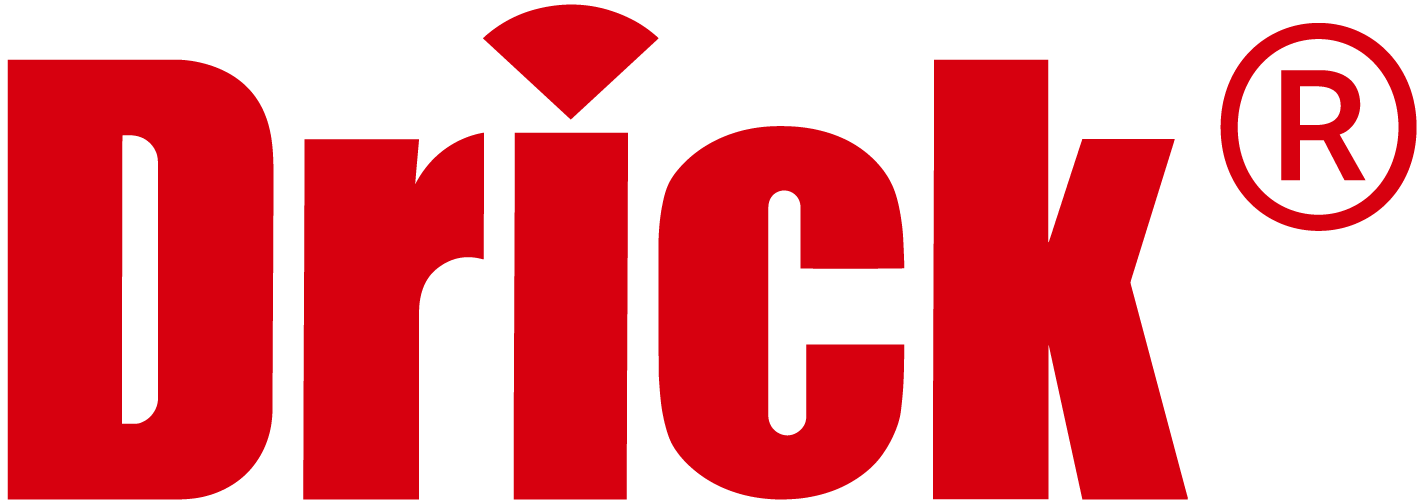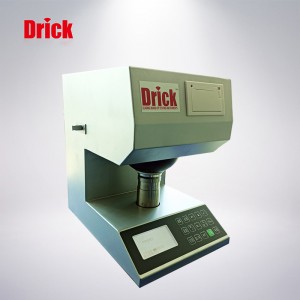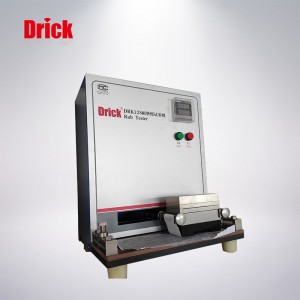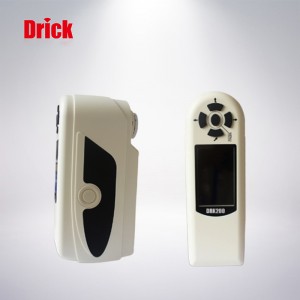DRK103 Whiteness Color Meter
DRK103 whiteness color meter is also called colorimeter, whiteness colorimeter, whiteness color meter, etc. It can be widely used in papermaking, printing, ceramics, chemical, textile printing and dyeing, building materials, food, salt and other industries to determine The whiteness, yellowness, color and chromatic aberration of the object.
Features
The instrument adopts optical, mechanical, electrical integration and microcomputer measurement and control technology, has the function of statistical processing of test data, can be printed out, and can measure the whiteness (brightness) and chromaticity of various objects.
1. Measure the color of the object, report the diffuse reflection factors RX, RY, Rz, stimulus values X10, Y10, Z10, chromaticity coordinates X10, Y10, lightness L*, chromaticity a*, b*, chromaticity C*ab, Hue angle h*ab, dominant wavelength λd, excitement purity Pe, color difference ΔE*ab, lightness difference ΔL*, chroma difference ΔC*ab, hue difference ΔH*ab, Hunter system L, a, b;
2. Determine the yellowness YI;
3. Determine the opacity OP;
4. Determine the light scattering coefficient S;
5. Determine the light absorption coefficient A;
6. Measure transparency;
7. Determine the ink absorption value;
8. The reference sample can be in kind or data. The instrument can store and memorize the information of up to ten reference samples;
9. Multiple measurements can be averaged; digital display and printable report measurement results;
10. The instrument has a memory function. Even if the power is turned off for a long time, useful information such as the zero adjustment, calibration, standard sample and reference sample value of the memory will not be lost.
Applications
1. Measure the color and chromatic aberration reflected by the object;
2. Measure ISO brightness (blue whiteness R457) and the fluorescent whitening degree of fluorescent whitening materials;
3. Measure CIE whiteness (Gantz whiteness W10 and color cast value TW10);
4. Measure the whiteness of building materials and non-metallic mineral products;
5. Measure yellowness;
6. Measure the opacity, transparency, light scattering coefficient and light absorption coefficient of the sample;
7. Measure the ink absorption value.
Technical Standard
GB 7973: Pulp. Paper and paperboard diffuse reflectance factor determination method (d/o)
GB 7974: Determination of whiteness of paper and cardboard (d/o)
GB 7975: Paper and cardboard color determination method (d/o)
ISO 2470: Measurement method of blue light diffuse reflectance factor of paper and paperboard (ISO whiteness)
GB 3979: Method of measuring object color
GB 8940.2: Determination of whiteness of pulp
GB 2913: Test method for whiteness of plastics
GB 1840: Method for determination of industrial potato starch
GB 13025: General test method for salt industry, determination of whiteness, textile industry standard: determination method for whiteness of chemical fiber pulp GB T/5950: whiteness measurement method for building materials and non-metallic mineral products
GB 8425: Instrumental evaluation method for textile whiteness
GB 9338: Method for measuring the whiteness of fluorescent whitening agents
GB 9984.1: Determination of whiteness of industrial sodium tripolyphosphate
GB 13176.1: Test method for whiteness of washing powder
GB 4739: Determination of the chromaticity of ceramic pigments for daily use
GB 6689: Instrument method for the determination of color difference of dyes
GB 8424: Method for determination of color and color difference of textiles
GB 11186.1: Method for measuring the color of coating film
GB 11942: Method for measuring the chromaticity of colored building materials
GB 13531.2: Determination of cosmetic color tristimulus value and color difference △E*
GB 1543: Determination of Opacity of Paper
ISO2471: Determination of opacity of paper and paperboard
GB 10339: Determination of light scattering coefficient and light absorption coefficient of paper and pulp
GB 12911: Test Method for Ink Absorption of Paper and Board
GB 2409: Test method for plastic yellow index
Product parameter
| Project | Parameter |
| Simulation of D65 illuminator lighting | Adopt CIE 1964 complementary chromaticity system and CIE 1976 (L*a*b) color space color difference formula |
| Use D/O lighting to observe geometric conditions | The diameter of the diffuser ball is 150MM, the diameter of the test hole is 25MM |
| Measurement repeatability | δ(Y10)<0.1,δ(X10.Y10)<0.001 |
| Accuracy | △Y10<1.0,△X10(Y10) <0.01. |
| Specimen size | The test plane is not less than Φ30MM, and the thickness is not more than 40MM |
| power supply | AC220V±5%, 50Hz, 0.3A |
| working environment | Temperature 10~30℃, relative humidity no more than 85﹪ |
| Size and weight | 300×380×400MM |
| weight | 15KG |
Product Configuration
1 whiteness color tester, 1 power cord, 1 black trap, 2 non-fluorescent white standard plates, 1 fluorescent whitening standard plate, 4 light bulbs, 4 rolls of printing paper, 1 instruction manual, qualified 1 copy of certificate and 1 copy of warranty.
Optional: Constant pressure powder compactor.
Products categories
-

Phone
-

E-mail
-

Whatsapp
-

Top








